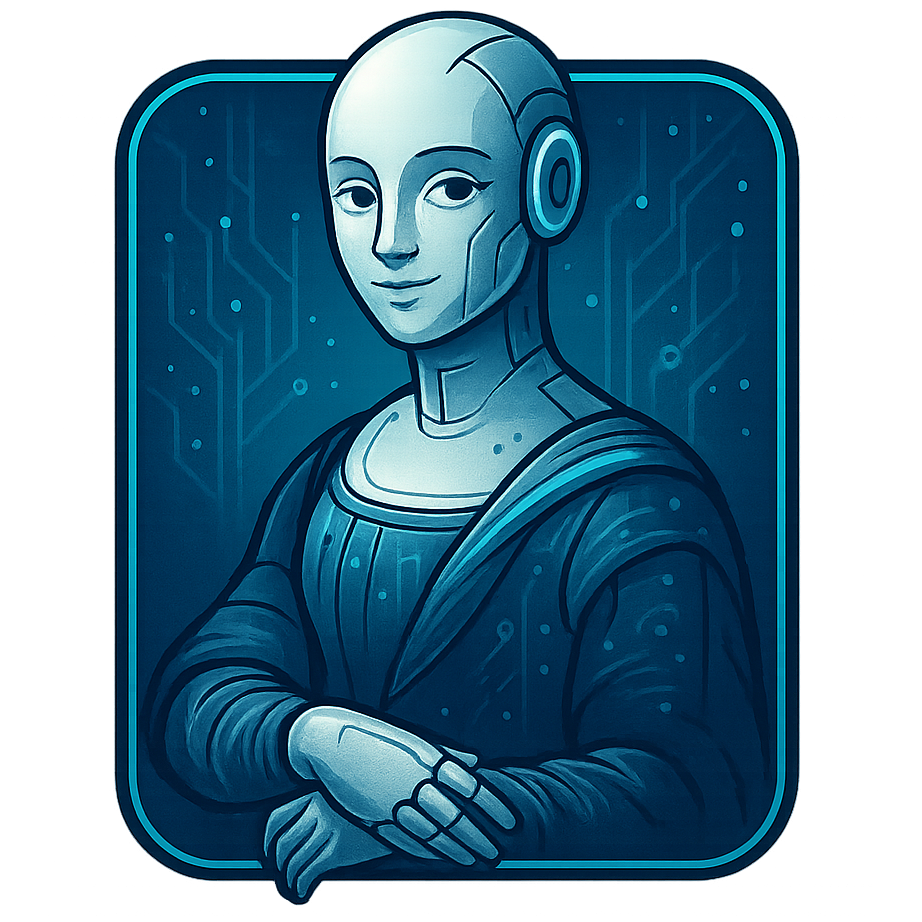Gemma-3, Google’s latest 27-billion parameter language model, is drawing attention for its creative writing prowess and nuanced narrative construction. Despite the model’s tendency to overuse stylistic devices—metaphors and similes flooding the prose like an unchecked river—its ability to thread together complex story elements stands out, especially when guided with well-structured prompts. Unlike some models that wrap up narratives hastily, Gemma-3 is willing to elaborate, producing extended, internally consistent stories (more: url). This flexibility stems from its system-prompt-free design: every input is treated as a system prompt, making it highly responsive to stylistic cues and instructions. However, attempts to refine its style with LoRA (Low-Rank Adaptation) fine-tuning have run into compatibility and deployment hurdles, highlighting the ongoing friction between cutting-edge model architectures and existing tooling.
On the software engineering front, Mistral AI and All Hands AI have introduced Devstral-Small-2505, a 24B parameter agentic LLM tailored for codebase exploration and automated software edits. With a 128k token context window and open Apache 2.0 licensing, Devstral positions itself as the top open-source performer on the SWE-bench benchmark for software engineering tasks. Its compact architecture enables local deployment on consumer-grade hardware, while its tool-oriented design makes it well-suited for agentic workflows—where the model not only generates code but interacts with tools and multiple files as part of its reasoning process (more: url).
For those seeking seamless integration of LLMs with external tools, the mcp-use library implements the Model Context Protocol (MCP), allowing developers to connect any LangChain-compatible LLM to a range of utilities like web browsers and file systems. The framework requires models with explicit tool-calling capabilities, making it easier to automate sophisticated agentic tasks across different LLM providers (more: url).
Meanwhile, Cloi CLI emerges as a privacy-first, local debugging agent that leverages Ollama or Anthropic models for context-aware code analysis. Cloi automatically indexes codebases, retrieves relevant context, and proposes fixes, all while keeping sensitive data on-device. Its retrieval-augmented generation (RAG) system combines CodeBERT embeddings with LLMs to improve debugging accuracy, offering developers a safer, more transparent way to incorporate AI into their terminal workflows (more: url).
The trend toward developer-centric AI tooling is further illustrated by a new Python library, Tagmatic, designed to simplify custom text classification. Unlike generic sentiment analysis or off-the-shelf classifiers, Tagmatic enables users to define bespoke categories—such as “billing,” “feature request,” or “urgent”—and provides a majority-voting mechanism to counteract LLM inconsistency on edge cases. By running multiple classification rounds and selecting the consensus, the library boosts reliability, filling a gap for teams tired of rebuilding classification pipelines from scratch. Tagmatic integrates with any LangChain-compatible LLM, making it both flexible and accessible (more: url).
In the realm of synthetic data generation, cleaning up incomplete or malformed responses remains a challenge. A user recounts their experience with Qwen 30B A3B, a fast Mixture-of-Experts (MoE) model, for post-processing outputs from Anthropic’s Claude. Despite the promise of local inference, the model struggled to reliably trim incomplete sentences and fix grammatical errors at the end of generated text, underlining the persistent gap between LLM output and production-grade data quality. Scripted grammar prompts and basic heuristics help, but robust, automated cleanup of synthetic data remains a pain point for many practitioners (more: url).
Streamlining workflows doesn’t stop there. A developer shares a successful migration of Open WebUI’s backend to PostgreSQL, leveraging a community-built migration tool. The process included reindexing and restoring knowledge bases on a new VPS without data loss—a testament to the maturity and reliability of open-source infrastructure around conversational AI interfaces (more: url).
On the agentic coding front, some users are integrating voice recording directly with Ollama, enabling local voice-to-prompt workflows. While simple, this kind of hack underscores the continued interest in fully local, privacy-preserving AI assistants (more: url).
Recent research pushes the boundaries of computer graphics and vision. “Triangle Splatting,” a new method for scene representation, argues for the return of triangles in radiance field modeling. Unlike Gaussian splatting—which can blur fine details—triangle splatting leverages differentiable rendering of 3D triangles, preserving sharp edges and improving visual fidelity. On benchmarks like Mip-NeRF360, the method outperforms both 2D and 3D Gaussian approaches, achieving over 2,400 FPS at HD resolutions using standard mesh renderers. This blend of classical graphics and modern neural optimization could mark a significant step forward in real-time novel view synthesis (more: url).
In high-speed vision, researchers have introduced a hybrid Spike-RGB camera system capable of capturing 1000 FPS high dynamic range (HDR) color video. By combining a neuromorphic spiking sensor with an alternating-exposure RGB camera, the system reconstructs color frames with both high temporal resolution and dynamic range. Spike-based optical flows guide the recovery of missing temporal information in RGB frames, enabling time-consistent, high-fidelity video that outperforms both traditional HDR reconstruction and commercial high-speed cameras. The accompanying Spike-RGB dataset offers researchers new ground for benchmarking and innovation (more: url).
Photonics research continues its rapid pace with the demonstration of a Germanium-on-Silicon photodetector featuring a record-low 0.08 fF capacitance, 91% quantum efficiency, and 38 Gb/s data rates on a 45 nm CMOS platform. The ultra-low capacitance not only boosts sensitivity and bandwidth but also enables higher integration density for next-generation electronic-photonic integrated circuits (EPICs). Such advances are foundational for the future of high-bandwidth, energy-efficient optical interconnects in data centers and high-performance computing (more: url).
The open-source release of MMaDA, a new family of multimodal diffusion foundation models, signals a shift in how researchers approach reasoning and generation across text and images. MMaDA’s unified diffusion architecture discards modality-specific components, favoring a probabilistic, modality-agnostic design. Its mixed chain-of-thought (CoT) fine-tuning and UniGRPO policy-gradient RL algorithm enable consistent improvements across diverse tasks, from textual reasoning to text-to-image synthesis. By unifying reward modeling post-training, MMaDA aims for broad, reliable performance without the fragmentation seen in previous multimodal systems (more: url).
In molecular AI, Facebook’s OMol25 dataset arrives as the largest high-quality collection of molecular DFT data, spanning over 100 million structures from biomolecules to metal complexes. Designed for use with the open-source fairchem library, OMol25 provides atomic positions, energies, forces, and rich metadata, supporting advanced modeling for quantum chemistry and materials science. The dataset’s scale and diversity mark a significant resource for researchers seeking to train or benchmark molecular property prediction models (more: url).
On the security side, a Python utility called zip_smuggling demonstrates how hidden data can be embedded within ZIP file structures, retrievable only via a shortcut and PowerShell on Windows. By inserting data between file entries and the central directory, the tool creates archives where the smuggled content is invisible to standard extraction tools, highlighting the subtle risks of steganography in seemingly innocuous files. The project also showcases the importance of understanding file format internals for both red and blue team operations (more: url).
Web app testers are reminded that Firefox, even when idle, generates hundreds of network requests daily for telemetry, updates, and ancillary services. For those using proxies like Burp Suite, this background “chattiness” can pollute logs and complicate test scoping. Fortunately, most of this traffic can be disabled via browser settings, reducing noise and improving the accuracy of test results. The lesson is clear: understanding and controlling your test environment is as important as the tools you use (more: url).
Developers seeking to optimize their workflows have access to new tools and architectures. The AWS FinOps Dashboard, implemented in Go, exemplifies the hexagonal (ports and adapters) architecture, cleanly separating domain logic from infrastructure and UI. With support for multi-profile AWS CLI setups and direct EC2 and cost explorer integration, it caters to organizations aiming for transparency and efficiency in cloud spend management (more: url).
On the learning front, aspiring ML engineers continue to discuss the best routes for self-education, often seeking comprehensive book recommendations that align with formal university syllabi (more: url). Meanwhile, questions about IDE and code assistant automation—such as having code suggestions auto-applied in the Cursor editor—reflect the ongoing desire for frictionless, AI-assisted development environments (more: url).
Even outside the enterprise, individual developers are building tools to reclaim control—like a custom audio player for iOS that bypasses Apple’s subscription lock-ins, or a “deep research” workflow for retired academics using Recoll, LangChain, and Ollama to automate the cycle of question generation, document retrieval, and summarization (more: url1, url2).
Finally, the spirit of innovation extends to GPU programming, where running GPT-2 inference in WebGL shaders is reviving interest in general-purpose GPU (GPGPU) techniques. While CUDA and OpenCL have largely replaced shader-based computation for ML workloads, these experiments serve as a reminder of the flexibility and untapped potential in existing hardware and APIs (more: url).

